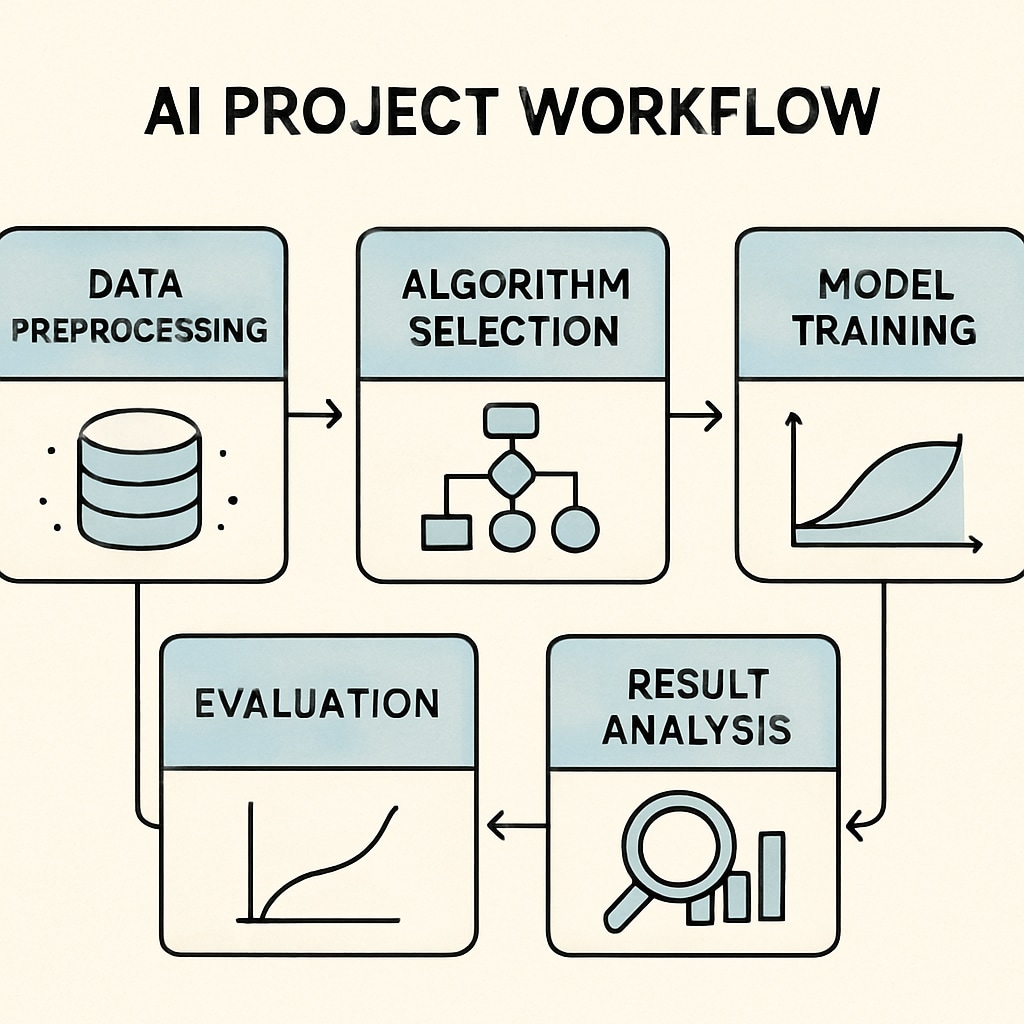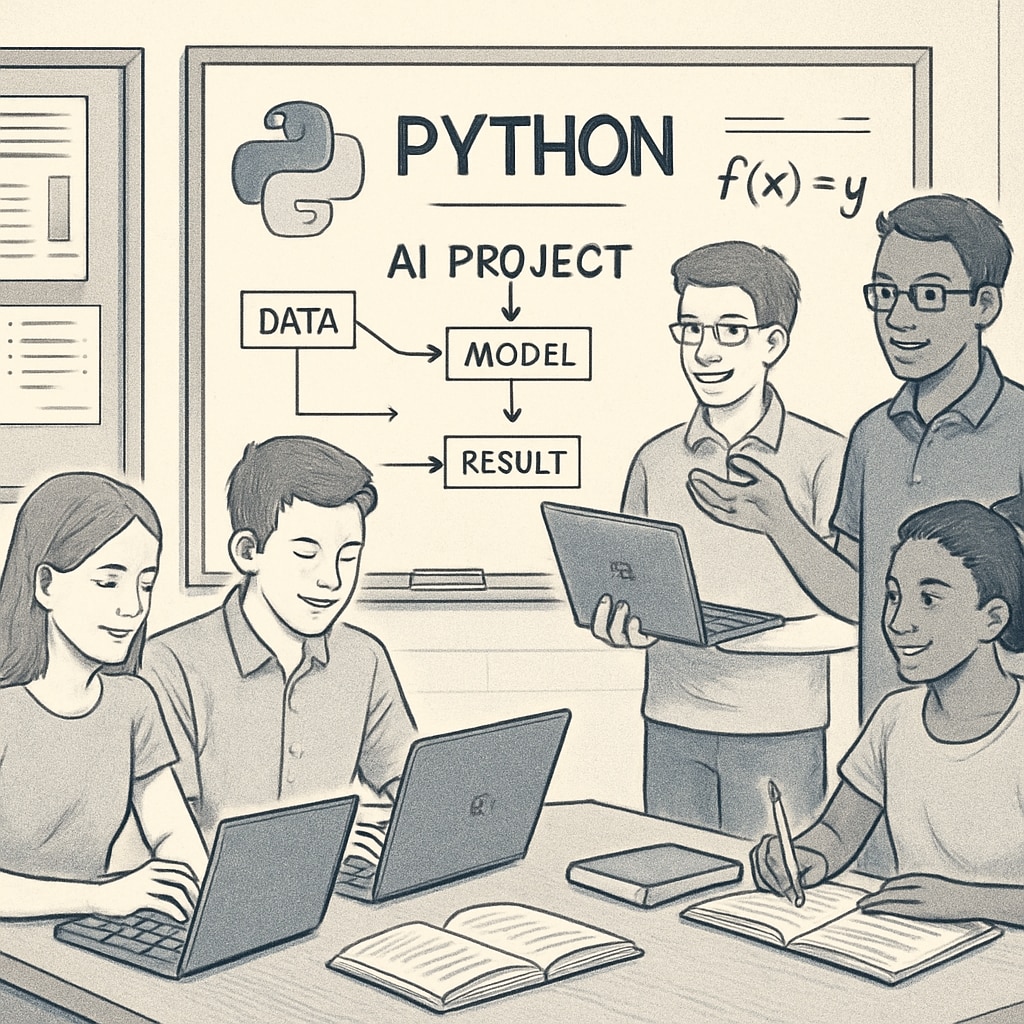With the growing demand for artificial intelligence (AI) education, universities face the challenge of providing meaningful learning experiences despite constraints like limited computational resources. This article examines how educators can design interactive, scalable projects for undergraduate AI courses, especially for second-year students. By focusing on foundational algorithm implementation and practical applications, educators can foster AI literacy and critical thinking while addressing real-world limitations.
Strategies for Scalable and Efficient AI Education
AI education is often associated with high computational requirements, such as GPUs or cloud computing platforms. However, not all institutions can afford these resources. To overcome this, educators can focus on projects that emphasize concepts over computation while still offering interactive, hands-on learning.
Here are some effective strategies:
- Start Small, Build Gradually: Introduce students to foundational topics like linear regression, decision trees, or k-means clustering. These algorithms can be implemented using basic programming environments like Python without heavy computational demands.
- Leverage Open-source Tools: Utilize frameworks like Scikit-learn, which are lightweight and ideal for teaching machine learning concepts without requiring extensive resources.
- Encourage Algorithm Optimization: Assign tasks that challenge students to optimize code for efficiency, teaching them how to work within computational limits effectively.

Interactive AI Projects for Undergraduates
Interactive projects not only engage students but also help them apply theoretical knowledge to practical scenarios. Below are some examples of resource-efficient projects that can be implemented in undergraduate AI courses:
- Spam Email Classifier: Students can use a small dataset of labeled emails to build a Naïve Bayes classifier. This exercise introduces natural language processing (NLP) concepts without overwhelming computational requirements.
- Image Recognition with Pre-trained Models: Instead of training deep learning models from scratch, students can use pre-trained models like MobileNet to classify images. This approach saves resources while demonstrating the power of transfer learning.
- Game-playing Agents: Create simple reinforcement learning agents for games like Tic-Tac-Toe or Snake. These tasks are computationally light yet provide a rich learning experience in decision-making and strategy.
Such projects not only align with the constraints of limited resources but also encourage creativity and problem-solving. Additionally, they can be extended for advanced learning, such as exploring ethical implications or integrating additional features.

Addressing Real-world Challenges in AI Education
AI education often mirrors the challenges faced in real-world AI development. By integrating resource constraints into coursework, educators can teach students how to innovate within limitations. For example:
- Data Collection: Use publicly available datasets from platforms like Kaggle or UCI Machine Learning Repository to avoid the need for expensive data procurement.
- Cloud Computing Alternatives: Introduce students to free or low-cost cloud platforms for occasional high-computation tasks.
- Collaboration and Peer Learning: Pair students in groups to share resources and ideas, fostering teamwork and resource optimization.
By addressing these challenges, educators can prepare students for real-world scenarios where budget constraints and resource management are critical factors in AI development.
Conclusion: Building AI Literacy Beyond Resource Barriers
Designing interactive and efficient AI projects for undergraduate students is entirely achievable, even with limited computational resources. By focusing on foundational concepts, leveraging open-source tools, and encouraging problem-solving within constraints, educators can deliver impactful AI education. These strategies not only equip students with technical skills but also prepare them to navigate the ethical and practical complexities of AI in the real world.
For more information on AI education and project-based learning, visit resources like the Artificial Intelligence page on Wikipedia or explore detailed educational guides on Britannica’s AI section.
Readability guidance: Short paragraphs, lists, and clear transitions ensure accessibility. The focus on foundational skills and practical applications keeps the content relevant for educators and students alike.


